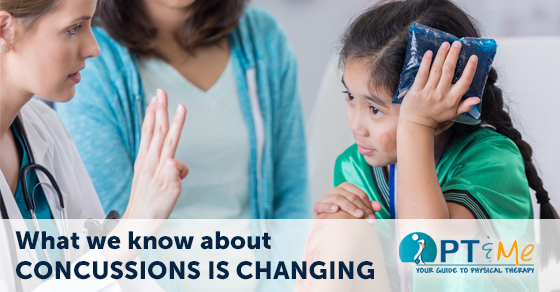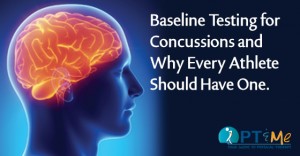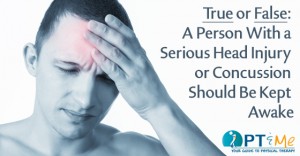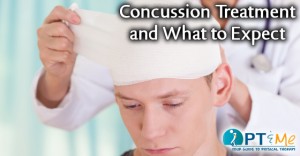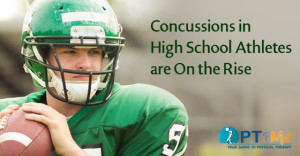As concussion research continues we’ve learned that a few of the things we have held as truth isn’t entirely accurate. Including the fact that a person with a concussion shouldn’t be allowed to sleep for long periods of time. So let’s take a look at how concussion treatment is evolving from what was… to what it is now.
Old School vs. New School Concussion Treatment
The first step to treating a concussion is to seek medical help. Your health care provider is knowledgeable and can help you or your child return to work or sport safely.
Old School Concussion Rehabilitation
- It’s just a “Mild, Grade-1” concussion.
- They didn’t have loss of consciousness, it’s not a concussion.
- Should we have a CT scan or MRI?
- An athlete needs to be hit on the head to sustain a concussion
- Injury to the brain only occurs at the initial impact of the concussion.
- Should I wake them up every couple of hours?
- Male athletes have a higher chance of sustaining a concussion than females.
- He’s young, he’ll bounce back quick.
- Protective equipment will prevent concussion if the newest modelis used.
New School Concussion Rehabilitation
- Medical professionals with “up-to-date” education on concussions will not use the historic grading scale. The grading scale has been abandoned in favor
of a symptom-based, multi-faceted approach to concussion management that emphasizes the use of objective assessment tools aimed at capturing the spectrum of clinical signs and symptoms,cognitive dysfunction and physical deficits, and a symptom-limited, graduated exercise protocol leading to a return to play. - Approximately 90% of concussions are NOT accompanied with loss of consciousness.
- Conventional CT or MRI scans will not diagnose a concussion and are not needed or recommended for the vast majority of sport related concussions. While these types of neuroimaging are crucial in the diagnosis of intercranial hemorrhaging and detecting brain lesions, approximately 78% of concussions will have normal scans.
- Concussions can occur with any movement or jostling of the head as in whiplash injuries or rotational force, causing injury to the brain.
- Traumatic brain injury is an evolving process at the microscopic level of thebrain. Chemical and metabolic changes occur for days, weeks to months after impact. That is why it is important to prevent any additional concussions andavoid a second impact syndrome during this time period.
- Encourage plenty of rest with uninterrupted sleep. Since fatigue and drowsiness are common symptoms associated with concussions, sufficient sleep will allow the brain to heal and is necessary for recovery.
- Studies show a higher probability in female vs. male athletes. This is likely due to their genetic make up and the fact that women are more likely to self report symptoms vs their male counterparts.
- Due to their continued brain development at these ages, children and adolescents actually recover more slowly.
- Evidence shows that protective equipment such as helmets, mouth guards and other protective devices may lower risk but no equipment eliminates the risk of concussion
This article about concussions was provided by PTandMe physical therapy partner: The Center for Physical Rehabilitation. More information about the Center and their locations throughout Grand Rapids, MI can be found on their website at www.pt-cpr.com
Additional articles from PTandMe about concussions can be found here:

